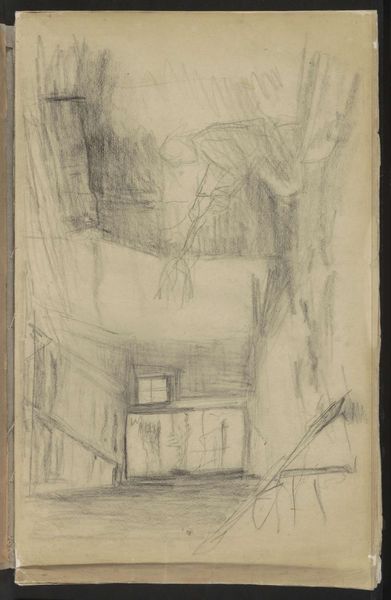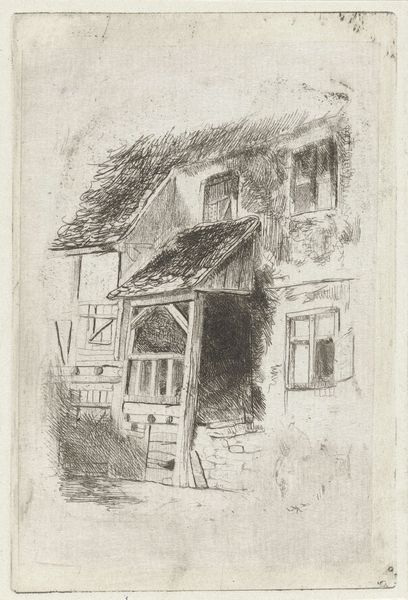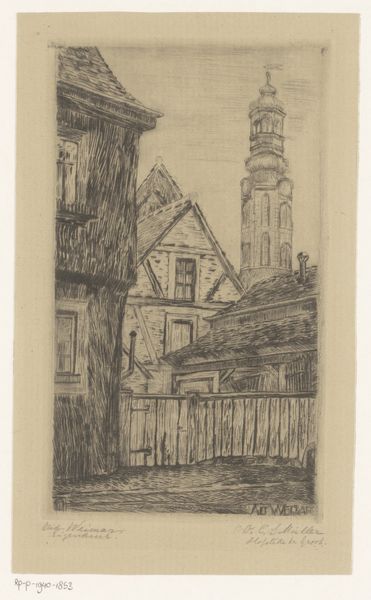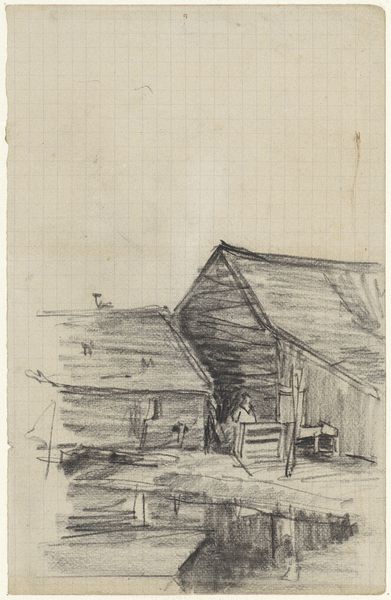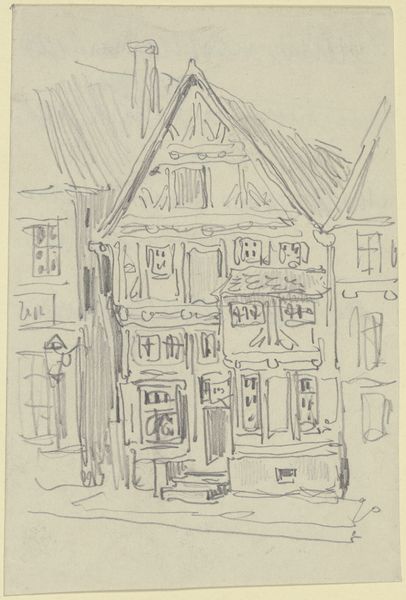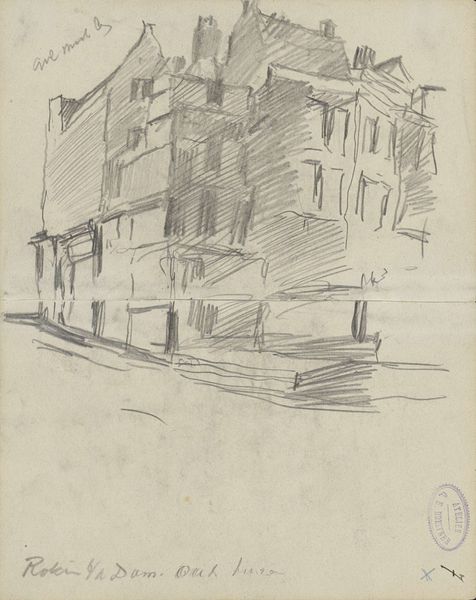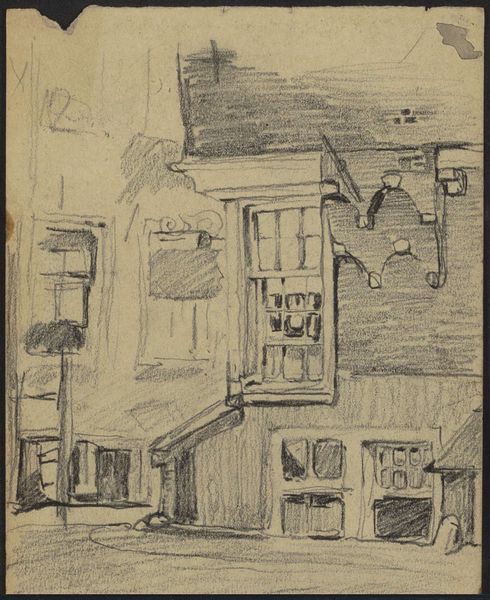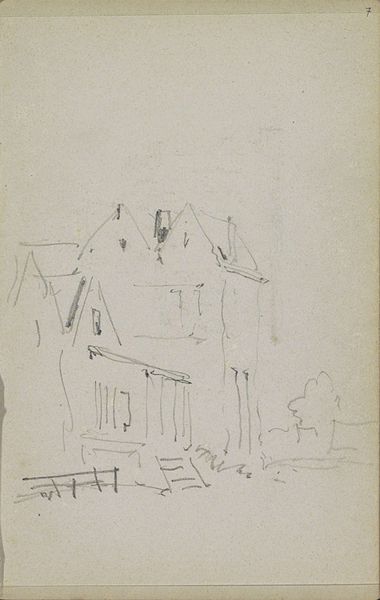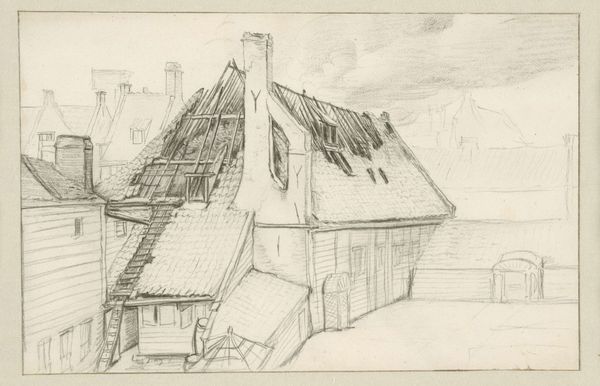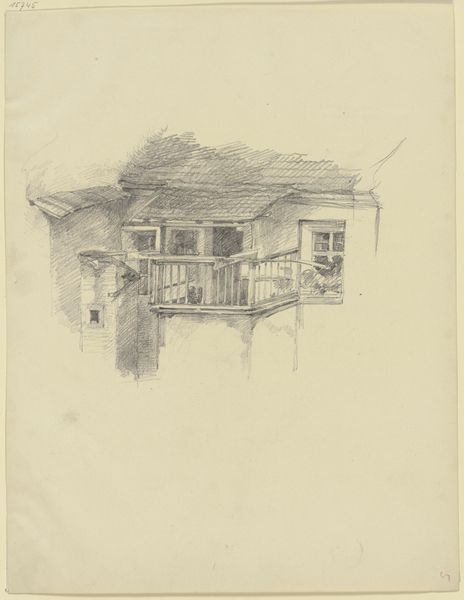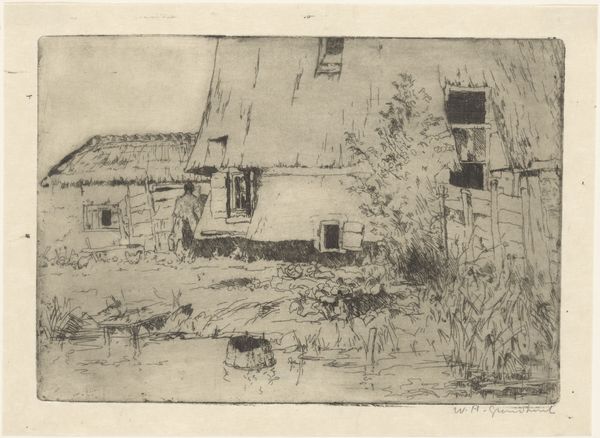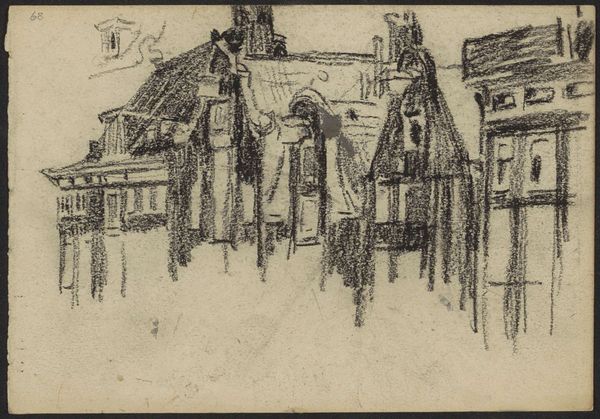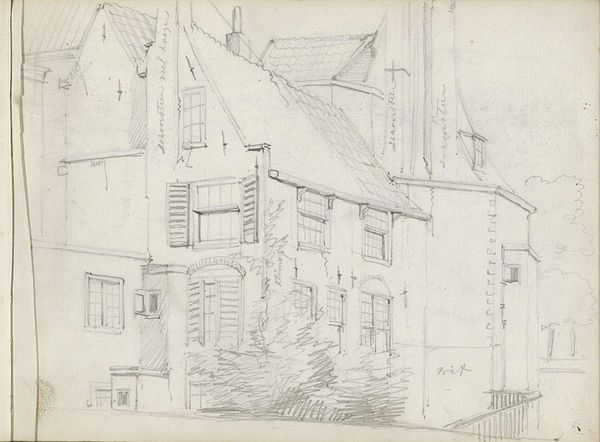
#
amateur sketch
#
toned paper
#
light pencil work
#
shading to add clarity
#
pencil sketch
#
incomplete sketchy
#
etching
#
personal sketchbook
#
pen-ink sketch
#
sketchbook drawing
#
street
Dimensions: height 164 mm, width 106 mm
Copyright: Rijks Museum: Open Domain
Editor: This is "Huizen te Dresden," a pencil drawing from 1888 by Theo Nieuwenhuis, housed here at the Rijksmuseum. It seems like a quick sketch, almost an impression. What’s striking to me is how the grid of the paper is still visible beneath the drawing. What can you tell me about it? Curator: Well, look closely at that visible grid. It reveals something fundamental about artistic labor. This isn't some transcendent vision effortlessly captured. The artist chose to work on readily available, utilitarian paper. He had no expectation that it should necessarily serve an elevated artistic purpose. Editor: So, you're focusing on the materiality of the work itself? Curator: Precisely. Notice how the sketch isn't "finished" in a traditional sense. The choice to leave it in this state shifts our attention from the subject matter – houses in Dresden – to the actual process of creation, to the immediate needs and concerns that dictated production of the artwork. The materials used suggest that sketches have more quotidian purposes than finished art. Editor: I see. So, rather than focusing on the artistry, we should consider it as a product of specific material choices and the constraints surrounding them? Curator: Absolutely! How available were sketchbooks? How costly were pencils? Those questions can lead us to understand the practical conditions shaping art production. It begs us to examine who had access to artistic expression and the economies that determined what art *could* be made. How does it relate to the wider history of pencil production in Europe? Where would an artist like Nieuwenhuis have even acquired such tools and materials? Editor: I never thought about a sketch in terms of access to materials. It makes you realize the connection between art and its economic context. Curator: Exactly! It invites us to look at the larger economic and social context from which the work emerged and how those shaped it. This artwork challenges the idealized image of artistic creation as purely inspired.
Comments
No comments
Be the first to comment and join the conversation on the ultimate creative platform.
